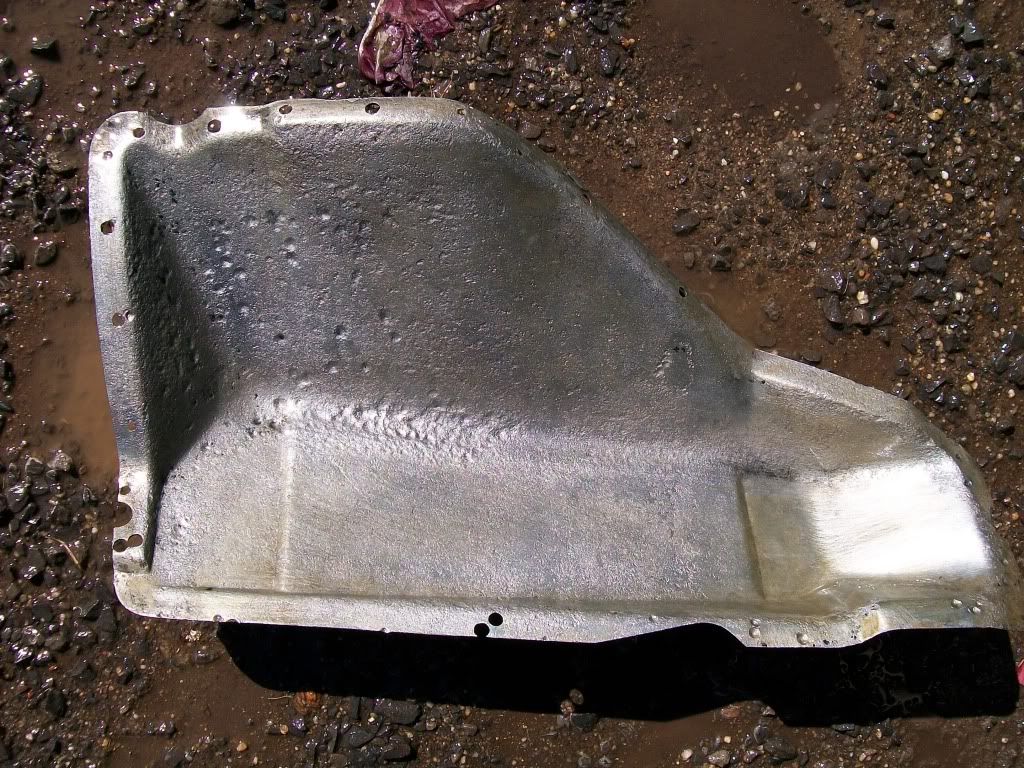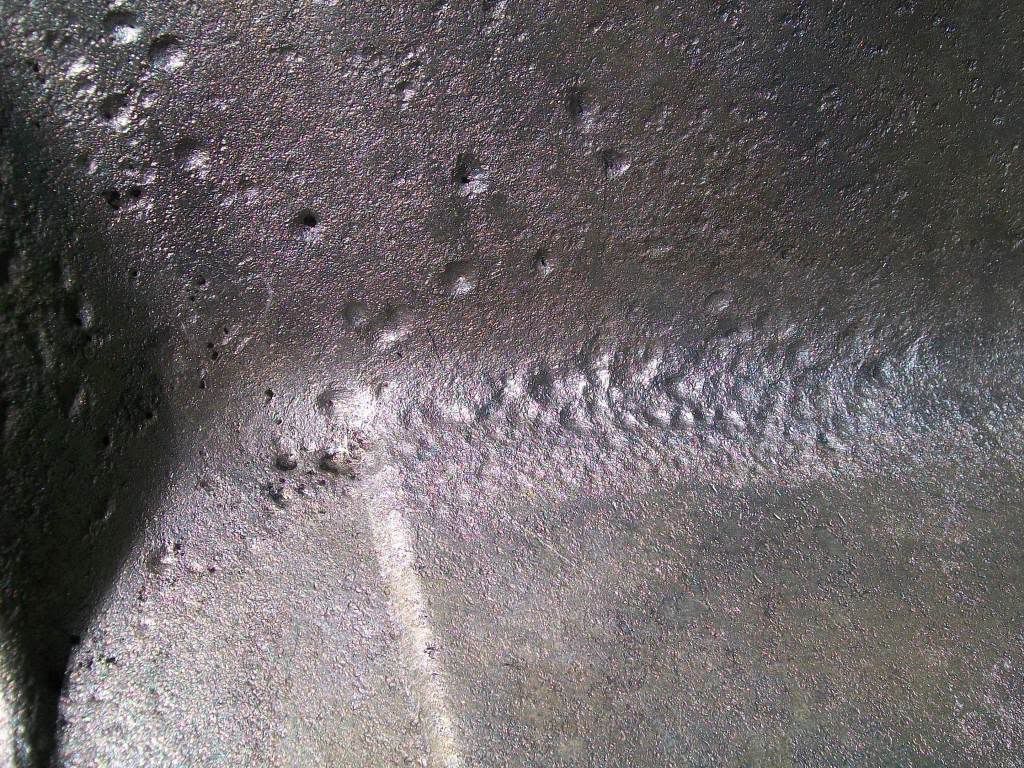enjoy

http://www.youtube.com/user/Desertrodder#p/u/4/y7VNvR5066w
http://www.youtube.com/user/Desertrodder#p/u/6/8-gBAjEga1s
http://www.youtube.com/user/Desertrodder#p/u/5/KZCFcxf5IBw
look at his other videos, great info


I tried this and it work excellent. though temps need to be above approximately 18oC or else you will be waiting a long time.
enjoy 
http://www.youtube.com/user/Desertrodder#p/u/4/y7VNvR5066w
http://www.youtube.com/user/Desertrodder#p/u/6/8-gBAjEga1s
http://www.youtube.com/user/Desertrodder#p/u/5/KZCFcxf5IBw
look at his other videos, great info 
is that the stuff that smells like banana?
sort of. more sugary treacle sort of smell.
pretty sure treacle is related to molasses anyway.
I have used molasses for years for rust and can vouch for it, good for old rusted tools too, good to see that video as I have given up telling people as most think your pulling their leg. I use 50/50 molasses and water and leave stuff in as long as possible. Bloke near me used it when doing up a '27 chev truck, just need a bit of patience.
yes it does work good. I have a one of those huge white buckets that the molasses came in with about 1:3 ratio. I chucked in some rusted up commodore
disks in there and surly but slowly its eating the rust ans only the rust.
Its been in there for about 2 months and I would say is about a 3rd done. Problem is I live in cold kyneton. Average temps through out this experiment
has been 5-10oC  It a chemical reaction so temperature
has everything to do with
It a chemical reaction so temperature
has everything to do with
the time it take to complete.
man thats awesome cant wait to try it ...thanks for the link 
thats really interesting.
and easy.thanks so much
Does this guy chop his car's into quarters or something and put them in?
then reweld all the panels hes made to make a whole car again?
that stuff looks to be thet go. most impressed.
I was thinking of making a recycling spray both. basically making a plastic water proof tent with a wooden frame on the floor of the shed lined with
plastic to make a sort of car sized tray.
then fill this tray with the solution and plumb some spray nozzles everywhere around and inside the body. have a pump to recycle the solution round
and round through the sprayers.
essentially its would be like submerging the whole car but without actually submerging it.
making sure every thing is water proof and leave the car in for a few weeks 
Then clean it all off, por15 metal ready it, then shove it into a another air tight both and run a few kero burners and a dehumidifier. haha be
awesome.
just dont go in there or you might die. The kero burners will do 2 things heat the both for faster drying and rob the air inside of oxygen and also
withdraw oxygen out of trapped water.
The dehumidifier will remove all the water out of the air essentially force drying the car after
being wet from pressure washing.
So in theory this will prevent any rust forming and dry it dryer than the moon 
haha my crazy plans
I reckon that's possible, maybe thermo-cycling through a solar panel or heat exchanger may offset the temperature issue?
yeah its only an experiment. I never do any body work in winter anyway.
I noticed something quite amazing. under top layer of sludge that forms the underneath layer is highly metallic silvery sludge. At closer inspection I
noticed it was actually metal sludge.
Very very fine particles of iron. So it actually turns the rust back into metal  thats cool.
thats cool.
I live on a small property,so we have molasses all the time.It was nothing for me to find a bucket pour some molasses in the bucket and fill the rest
with water.This is after a week and a half in the bucket.


I now have a big tub,which i am going to use for bigger pieces.just a word of warning thou,it must be sealed straight away.I took a small piece of rio
into work to show everyone what i have been doing.I got it out of the bucket at 8:00 and put it in clemy,then got it back out of the car at around
12:00. and it was covered in surface rust.So just make sure you have some form of sealant ready.Anyway the proof is in the pics.
Enjoy.
good isn't it 
if i say dipped a door and some fenders, would it actully eat the rust away or would it just turn the rust into another kind of material and then i
would spray over that?
cheers
Well from my experience it eats up the rust and leaves the good metal however thin, so you still need to weld in new steel if need be. Doesn't matter how long you leave it, steel won't be eaten, only rust!
yep thats right. I have some disk rotors that have been in it for 4 months? looks perfect.
guys, im really exited. i followed the internets instructions and vwalla! check this out:
Yep its great. Although mine has ceased to working just about. I think I need a fresh batch of molasses as I am pretty sure my lot was bought 2007.
Fresh batch of molasses. 25Kg cost me 23 buks, which can make 200L



Has anyone tried using molasses to remove rust on chromed parts? does it affect the chrome? And does it remove oxide from alloy parts?
How cool is this ? As a bonus, my neighbour has horses.... So molasses is easy to come by !!!
Likewise keen to hear if this will affect chrome - anyone know ?
Well i'll be...............
will give this a shot next i remove some rust
I have a molasses tank I use on occasion. Some alloys go a bit crazy and blow up, not sure about chrome, I think it doesn't hurt it, but I'll drop
in an old hubcap and let you know.
Biggest hassle is it takes quite some time depending on the coatings and part.
I just did some VT caliper brackets which are zinc plated and had some rust and heavy brake dust stuck on them.
3 days to bare metal including taking the zinc off. I learned a trick that helps a lot. heat! the hotter the mixture the faster it will react, so I
had my tub in the hot sun so the liquid was from a guess around 40-50ºc
in winter is can talk over 3 weeks to do some stuff.
From experience it will lift chrome to some degree, depending on how long of course you leave it in there. If you don't want certain areas to be
affected, coat them in bearing grease and that stops any molasses getting to it.
What do you mean "Some alloys go a bit crazy and blow up"? you should not put alloys in there anyway as it ruins aluminum alloys. What you want
for alloy is phosphoric acid. aka aluminum cleaner.
Cheers guys, much appreciated. I'm guessing it would lift chrome mainly only where the iron oxide extends under the chrome plate ? Neat stuff anyways !
This seems to be a very slow way of achieving the same result as acid treatments.
My guess is that the molasses fements to acetic acid (vinegar) and removes the oxidised steel (i.e. rust).
You can achieve same results using dilute vinegar, citric acid (fruit acid) which is used in industry to passivate steel surfaces or if you want a
real quick result diluted pool acid (HCl). DO NOT USE HEAT WITH ANY ACIDS HOWEVER.
Whatever the method, it appears to be the same - use an acid.
I use citric acid as my preferred method- 5to 10% solution of powder in water. Leave rusty nuts and bolts and parts in it for a day or so and the rust
goes. Even nuts and bolts that are brutally stuck together usually come apart. It will not return the rust but gets rid of it. You may end up with
swiss cheese if it is badly rusted. You should be able to buy citric acid from places that sell beer bottling outfits. It is used as an ingredient in
food and is relatively safe like molasses.
Now the important thing is that every parts is extensively washed in water or neutralised with say bicarb of soda then rinsed again. Adding water
again starts the IMMEDIATE rusting process so the surface of the metal needs to be treated. I usually put my cleaned small parts into WD40 solution or
light oil for a while afterwards to give them a coating before I use them.
When you acid treat the surface you provide a virginal surface for the oxidation process to start again (i.e.rust). This is why the the experiment
above showed immediate surface rust.
DISCLAIMER: My suggestion is to try out the methods above, but I take no responsibility for YOUR safety. Do your research and wear your Personal
Protective Equipment, like safety glasses, gloves etc.
Try it out on some parts that may be not worth keeping first and see if it works. It will!
| Quote: |

Don't disagree re the molasses, but for most of us city sllickers molasses would be difficult to obtain in bulk.
So what I have done is to get a large tank called an IBC or Intermediate bulk container. These are the square plastic containers of 1000 litres with a
steel cage around it. I get mine from work, but you sometimes see them on ebay. Cut off the top plastic so you can get the parts iin. Put in the water
and then citric acid. For a half full tank you put in 500 litres of water, and 25kg bag of citric acid. Actual concentration is not critical. As I
work in the chemical industry I can get the citric in bulk cheap.
I have treated my doors, mudguards, boot and bonnet and donor complete quarter panels this way. Whatever you can fit. Small parts can go in drums,
buckets or whatever else you have lying around. The solution does NOT go off but continues to work for a long time -has no smell, doesn't burn - you
can put your hands in it no problems UNLESS you have cuts in which case you get stinging.
Alternatively you can build a frame out of wood, or bricks or even just mound dirt and place in a tarpaulin big enough to hold the item in question
inside and then fill with water. Wouldn't suggest going too high, maybe 100-200 mm might be enough depending on what you are trying to immerse.
Re the HCl. I agree concentrated stuff is nasty. But when you dilute it from the 32% solution you buy say from Bunnings, 10-fold, it is not much of a
problem.
So Citric Acid has the following benefits:
1. Reasonably cheap.
2. Doesn't smell awful like molasses or vinegar or pool acid
3. Works quickly depending on how strong you use it.
4. Is relatively innoccuous - won't burn the bejesus out of you. It is used in soft drinks and lollies so it can't be too bad for you
5, It is not difficult to get rid of when you have used it.
Do some google searching for it or watch this video. It really is the best method I have come up with.
In all cases it is best if you can remove as much of the offending crap as possible like oils and greases as this tends to create big grease balls in
the solution.
http://www.youtube.com/watch?v=ckdMdiJlV7c